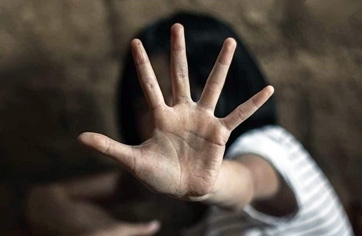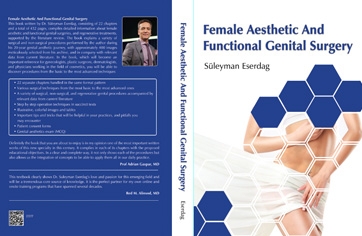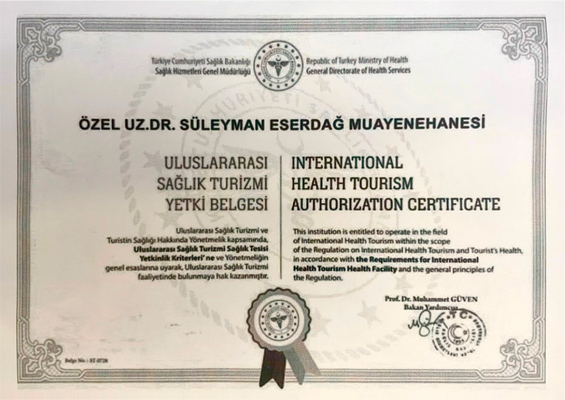Female Genital Mutilation is a traditional practice rather than a religious practice that dates back to the Pharaonic era, mainly practiced in West African countries such as Sudan, Ethiopia, Egypt, and Somalia. Female circumcision is often referred to as "Female Genital Mutilation (FGM)" in the literature.
History of Female Genital Mutilation (FGM)
It is accepted that Prophet Ibrahim was circumcised at the age of eighty, he had his children circumcised, and the circumcision of both men and women began at that time.
Ibrahim, who lives in Palestine and is married to Sarah, has no children.
Sarah presents her black slave Hajer to her husband, İbrahim, and asks him to have a child. However, when Hajer becomes pregnant with İbrahim, Sarah becomes jealous and demands that her three limbs be amputated.
İbrahim orders Hajer to pierce her ears and be circumcised as he is worried about this situation. However, Sarah's anger does not end after that. For this reason, İbrahim takes Hajer to Mecca with his newborn child, Ismail, and leaves them there. Mecca, a town that no one visited at that time, quickly gained popularity after Hajer and Ibrahim, who came to her aid, rebuilt the Kaaba.
Countries that have female genital mutilations
Pictures on some papyri and circumcision scenes on the Karnak Temple Complex wall in Luxor prove that circumcision was also common in Ancient Egypt. Today, between 80 and 110 million women are circumcised in approximately 26 countries in Africa. Sudan and Somalia head these countries. The rate of circumcision in girls is around 97% here.
Apart from Africa, girls are also circumcised in Yemen, Northern Iraq, Arabia, India, Pakistan, and Malaysia. In addition, the citizens of these countries are trying to maintain their customs in the countries they migrated to. According to the information I received from my Indonesian colleagues, this ritual is performed by gently scratching the clitoris of girls born in this country with a small injector needle.
Female circumcision is a practice that comes from tradition and is later associated with religion. It is not mentioned in the Qur'an, and there is no sound information about the circumcision of the daughters of the Prophet. According to the Hanafi school, circumcision should only be applied to men.
Within the “International Day of Zero Tolerance for Female Genital Mutilation” framework announced by the United Nations, large-scale global programs against female genital mutilation were conducted in 17 African countries by UNICEF and UNFPA. Many advertisements, booklets, and research reports against female genital mutilation have been published in this context. Thanks to all these efforts, a great deal of success has been achieved, and female genital mutilation is banned in 24 of the 30 countries.
What is female circumcision? How is it done?
Traditionally, it is done by cutting the external genitalia of girls between the ages of 6-10. In these countries, uncircumcised girls face the risk of being ostracized and labeled by society. In general, the aim is to protect the woman's chastity by reducing her sexual desire and pleasure during sexual intercourse.
The procedure is usually carried out in childhood without any consent, primarily by neighborhood midwives who are not health personnel.
Genital Injury - Risks of FGM
FGM, also known as "genital injury" or "genital mutilation", is considered a violation of women's human rights, has many risks and negative aspects. Risks and complications that may occur in female circumcision:
- Tetanus,
- Extreme pain,
- Edema,
- Infection,
- Fever,
- Excessive bleeding,
- Shock,
- Chronic pain,
- Organ damage,
- Urinary incontinence problem,
- Infertility,
- Difficulty in vaginal delivery if pregnant,
- Fistula formation.
Its severity (amount of damaged tissue) and health risks are related to the type of mutilation and the amount of tissue cut.
According to the WHO (World Health Organization) declarations, in 30 different countries led by Sudan, over 200 million girls have been circumcised in total, and 3 million girls are at risk of being circumcised every year.
Types of Female Genital Mutilation - World Health Organization Classification
There are four different types of genital mutilation and its subgroups defined by the World Health Organization (WHO) in 1997. Types of female genital mutilation:
Type I: Excision of all or part of the clitoris along with the foreskin
- Type Ia: Removal of clitoris skin only
- Type Ib: Removal of the head and skin of the clitoris together
Type II: Partial or complete excision of the head of the clitoris as well as the labia minora
- Tip IIa: Removal of inner labia only
- Tip IIb: Partial or complete removal of the head of the clitoris and labia minora (Hood may be affected).
- Type IIc: Partial or complete removal of the labia minora, labia minora, and head of the clitoris (Hood may be affected).
Type III: It is also called 'infibulation'.
It is the cutting and removal of all external genitalia. An opening the size of a matchstick tip is left, which will allow only urine and menstrual blood to flow. The inner and outer lips were cut and replaced. The clitoris is sometimes removed, sometimes not. Since intercourse cannot occur after marriage, the vaginal entrance is opened with a surgical incision, and sexual intercourse is ensured.
- Type IIIa: Removal and replacement of the inner lips
- Type IIIb: Removal or displacement of the outer lips
'Deinfibulation' includes operations to reopen the vaginal entrance in Type III genital mutilation. It is done to enable sexual intercourse and/or vaginal delivery, to restore the health and well-being of the woman.
Type IV: It includes all harmful practices such as drilling, piercing, cutting, scraping, burning, etc., made to the genital area for non-medical reasons.
Female circumcision is different from genital plastic surgery!
Female circumcision is seen as genital mutilation and is quite different from genital aesthetics because:
- Genital aesthetic operations are not recommended for aesthetic purposes under the age of 18. Female circumcisions, on the other hand, are generally performed in childhood, such as between the ages of 6-10.
- The aim in genital aesthetic operations is aesthetic and functional correction. However, genital mutilation procedures are performed with the thought of preventing sexual pleasure.
- Genital aesthetic operations are performed under sterile conditions in a clinic or hospital. Female circumcisions are generally performed at home in non-sterile conditions and by neighborhood midwives.
- Written and verbal consent is obtained from patients before genital aesthetic operations. There is no consent requirement for genital mutilation.
Revision Surgeries in Istanbul (Turkey) for Female Circumcision
Revision surgeries for female circumcisions can be provided by our clinics located in Istanbul / Turkey, since we have more than 20 years of experience on cosmetic – plastic and reconstructive genital surgeries. You can text to our WhatsApp nr for your enquiries: +90 530 763 34 00















